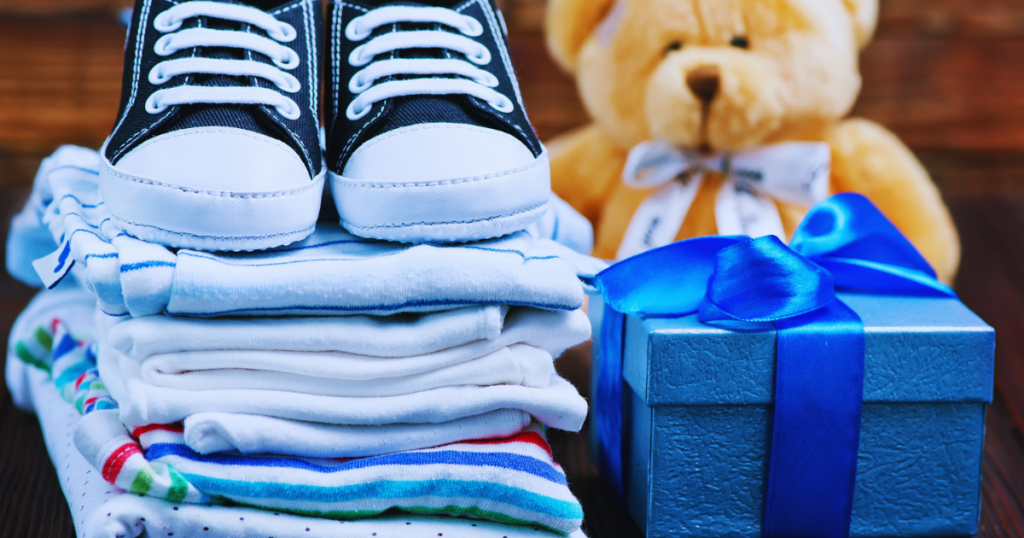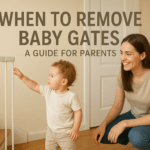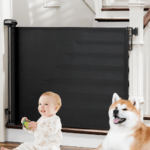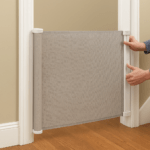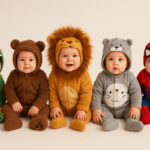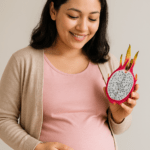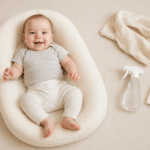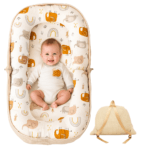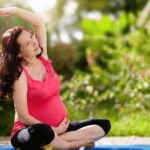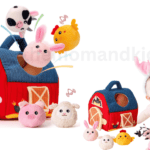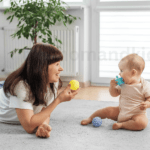Keeping your baby’s clothes organized can feel like a never-ending task, especially with how quickly they grow and the sheer volume of tiny outfits they cycle through. From onesies to socks, having an efficient system for folding and storing baby clothes keeps your nursery tidy and saves valuable time and space. Properly folded clothes are easier to access, stay wrinkle-free, and can be stored more compactly, making it easier to find what you need quickly during busy moments.
This guide focuses on simple yet effective folding techniques designed for baby clothes. Whether you’re a first-time parent overwhelmed by the laundry pile or simply looking to streamline your current routine, you’ll learn methods to fold and store baby clothes that make life a little easier. From onesies and pajamas to tiny socks and hats, we’ll cover how to fold each item for maximum space efficiency and easy access. An organized nursery looks better and adds a sense of calm and order to your daily routine.
Importance of organizing baby clothes

Organizing baby clothes is essential for creating a tidy, stress-free environment in your home. With babies undergoing multiple outfit changes daily, having a well-structured system can save you time and frustration. When clothes are neatly folded and organized by type, size, and frequency of use, you can quickly locate the items you need, even in hectic moments. This organization also prevents clothes from becoming wrinkled or damaged, preserving their quality for longer.
Additionally, an organized wardrobe makes it simpler to rotate seasonal items or manage outgrown clothes, ensuring that only your baby’s needs are accessible. It also makes it easier to see when you need to restock or donate items that are no longer used. Beyond practicality, a clutter-free nursery promotes calm and order, creating a more enjoyable space for you and your baby. Keeping baby clothes organized is a small effort that yields big rewards.
Read to know more; Why Does My Baby Cry While Eating Solids? A Guide for Parents
Benefits of folding clothes properly
Folding clothes properly offers several key benefits that can significantly improve your daily life. First and foremost, it is a space-saving technique (3) that allows you to maximize storage in your drawers, closets, or suitcases. Neatly folded garments take up less room, enabling you to store more items in the same space.
Additionally, proper folding makes accessing your clothes easier (2). When clothes are neatly folded, you can see everything at a glance, which saves time when choosing an outfit and keeps your wardrobe organized. This eliminates the need to rummage through piles of clothes, reducing stress and maintaining order.
Another significant benefit is that folding helps keep clothes wrinkle-free (2). When clothes are crumpled or stuffed into drawers, they are more likely to wrinkle, leading to the need for frequent ironing. Proper folding techniques prevent this by maintaining the shape and integrity of the fabric.
Lastly, taking the time to fold your clothes shows respect for your belongings, prolonging their lifespan and keeping them looking new for longer. Whether for travel or everyday storage, the benefits of folding clothes properly are clear: more space, more accessible access, fewer wrinkles, and better garment care
Different types of baby clothes to consider

Considering these types of baby clothes ensure your little one is comfortable, safe, and stylish for any occasion when preparing for a baby, there are several types of baby clothes to consider, each serving a different purpose and suited for various infancy stages.
- Onesies are essential, all-in-one outfits that snap at the bottom, making diaper changes easy. They come in short and long sleeves, perfect for layering or wearing alone.
- Sleepers: Also known as footed pajamas, sleepers are ideal for bedtime. They keep the baby warm and cozy, with built-in feet to protect tiny toes.
- Rompers: These are one-piece outfits, usually with short sleeves and legs, perfect for playtime. Rompers are comfortable and allow for easy movement.
- Swaddles: Swaddles are soft blankets designed to wrap around the baby, mimicking the feeling of being in the womb. They help soothe and calm the baby, promoting better sleep.
- Bodysuits: Similar to onesies but more versatile, bodysuits can be worn under other clothing or on their own during warmer months.
- Hats and Mittens: Newborns lose heat quickly, so hats and mittens are essential for keeping them warm, especially outdoors.
- Socks and Booties: These keep the baby’s feet warm and protected, essential in colder weather.
- Jackets or Coats: For cooler climates, a warm jacket or coat is necessary for outdoor adventures.
Preparing Baby Clothes for Folding
Step 1: Sort Clothes by Type
Begin by sorting your baby’s clothes into shirts, pants, onesies, and socks. This will make the folding process more efficient and ensure that similar items are stored together, making them easier to find later.
Step 2: Ensure Clothes are Clean and Dry
Before folding, make sure all clothes are clean and completely dry. Folding damp clothes can lead to mildew and unpleasant odours. Clean clothes also prevent dirt or stains from setting in while in storage.
Step 3: Have a Clean, Flat Surface for Folding
Prepare a clean, flat surface to comfortably fold the clothes. This could be a table, bed, or smooth surface providing enough space to work efficiently.
Section 2: Folding Techniques for Common Baby Clothing Items
Onesies
- Lay the onesie flat on the surface with the front facing up.
- Fold the sleeves inward towards the centre of the onesie.
- Fold the bottom of the onesie up toward the neckline, creating a neat rectangle.
- Finally, fold the onesie in half to save space. This makes it easy to stack or store in a drawer.
Pants/Leggings
- Lay the pants flat with both legs together, aligning the seams.
- Fold the pants in half vertically, bringing the bottom of the legs up to the waistband.
- Fold once more horizontally to create a compact shape that’s easy to store.
Shirts and Tops
- Lay the shirt flat with the front facing down.
- Fold the sleeves towards the back, aligning them with the sides of the shirt.
- Fold the shirt in half vertically, bringing the bottom hem up to the neckline.
- Finally, fold the shirt horizontally, creating a small, neat square.
Socks
- Pair the socks together by aligning them.
- Fold the pair in half or roll them from the toes to the cuff to save space.
Section 3: Advanced Folding for Space-Saving
Rolling Method for Small Clothes
The rolling method is an excellent space-saving technique for items like onesies, leggings, and small shirts. Fold the item usually, then roll it tightly from one end to the other. This method not only saves space but also helps prevent wrinkles.
Folding into Compact Squares for Easy Storage
For items like shirts, fold them into compact squares by folding them in half vertically, then horizontally, and finally tucking the edges in to create a small square. This technique is beneficial for stacking clothes in drawers.
How to Store Folded Clothes in Drawers
To maximize drawer space, consider vertical stacking, where clothes are placed upright instead of flat. This method allows you to see all items at a glance. Drawer dividers can further help keep different types of clothing organized and prevent items from shifting.
Section 4: Organizing Baby Clothes After Folding
Tips for Storing Clothes by Size, Type, and Frequency of Use
Organize your baby’s clothes by grouping them by size, type, and how often they are used. Keep frequently used items like onesies and sleepers in the top drawers for easy access, while outgrown or less-used items can be stored in lower drawers or storage bins.
Using Storage Bins, Baskets, and Drawer Organizers
Storage bins, baskets, and drawer organizers are great tools for neatly arranging baby clothes. Use small baskets for socks, mittens, and hats and larger bins for outfits that are out of season or too big. Drawer organizers help keep items like onesies and pants separated and easy to find.
Labeling Drawers or Bins for Easy Identification
Labelling drawers or bins is a simple but effective way to ensure you can quickly find what you need. Labels can be as simple as handwritten tags or as elaborate as printed labels. Consider labelling by size (e.g., 0-3 months, 3-6 months), type (e.g., tops, bottoms), or occasion (e.g., everyday wear, special occasions).
section 5: Folding Tips for Special Baby Items
Swaddles and Blankets
Swaddles and blankets, often larger and bulkier than other baby items, can take up significant space if not folded properly. To fold these items into compact sizes:
- Lay the swaddle or blanket flat on a clean surface.
- Fold it in half lengthwise, aligning the edges carefully.
- Fold it in half again or in thirds, depending on the size.
- Finally, fold it into a small square or rectangle, making it easy to stack or store in a drawer or shelf.
Hats and Mittens
These small accessories can easily get lost or create clutter if improperly organised. Here are some tips:
- For hats, fold them in half and stack them on each other.
- For mittens, pair them together and either fold or clip them with a tiny clothespin to keep them together.
- Store hats and mittens in small bins or drawer organizers to keep them easily accessible and prevent them from getting misplaced.
Section 6: Maintenance and Rotating Baby Clothes
Regularly Check for Outgrown or Unused Clothes
Babies increase, so it’s important to regularly go through their wardrobe to identify clothes that are too small or no longer used. Set aside time every few months to sort through their clothing and pull out items that no longer fit.
Donate or Store Clothes That Are No Longer Needed
Once you’ve identified outgrown or unused clothes, decide whether to donate, pass them down, or store them for future use. Donation is a great way to give back while storing special items, as keepsakes can be a meaningful way to preserve memories.
Rotate Seasonal Items as Needed
As the seasons change, rotate your baby’s wardrobe to ensure the appropriate clothing is easily accessible. Store out-of-season items in labeled bins or the back of the closet, and bring forward the clothes suitable for the current weather. This practice keeps your baby’s wardrobe functional and organized year-round.
FAQ:
Why is it essential to fold baby clothes properly?
Folding baby clothes properly helps save space, keeps garments organized, and prevents wrinkles. It also makes finding and accessing clothes easier, which is especially helpful during busy times.
What are the best methods for folding baby clothes to save space?
Rolling and folding clothes into compact squares are two effective techniques for saving space. Rolling small clothes like onesies and leggings reduces bulk, while folding items into squares allows for efficient stacking and storage.
How can I organize baby clothes in drawers?
To organize baby clothes in drawers, try vertical stacking, making it easy to see all items simultaneously. You can also use drawer dividers to separate different clothing types and label each section for quick identification.
What should I do with baby clothes that my child has outgrown?
You can donate, pass down, or store outgrown baby clothes. Donating is a great way to help others while storing special items, as keepsakes preserve precious memories.
How often should I check my baby’s wardrobe for outgrown clothes?
It’s a good idea to check your baby’s wardrobe every few months. Babies proliferate, so regular checks ensure they always have clothes that fit and are appropriate for the season.
Conclusion
Properly folding and organizing baby clothes is essential for maintaining a neat, efficient, and stress-free environment. By using effective folding techniques, organizing by size and type, and regularly rotating and checking for outgrown items, you can ensure that your baby’s wardrobe remains functional and accessible. These practices save space and time and help keep clothes in good condition, smoothing daily routines. With a well-organized system, you can focus more on enjoying precious moments with your little one.
